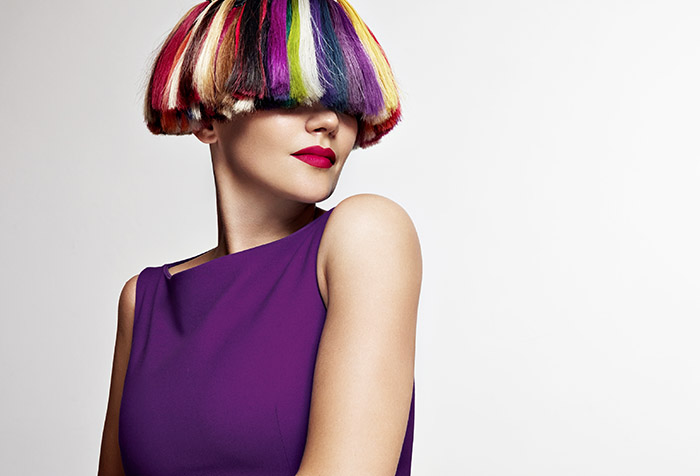
Are you looking for a new hair colour? Maybe you’re looking to give yourself a hair makeover. Getting a new ‘do is a great way to change up a look. It’s not as easy as just throwing some dye on hair and hoping for the best. Different hair colouring levels take to colour differently and will give you different results. Are you unsure how hair colouring levels work? Are you too afraid to ask what those confusing numbers and letters mean? We’ve got you covered.Choose the right colour for hair dye by using our quick guide on identifying hair colouring levels.
Why do we measure in levels?
Hair colour levels are crucial when it comes to dyeing hair. They provide an easy system to let you know what colour you’re going to get and what colours are accessible to people with different underlying colours (such as the colour of their natural hair).Measuring in levels gives you a system to base your work on. The levels aren’t exact as hair comes in so many different forms, but they act as a guide to follow so that you get the best results from your dye-job.
What does it mean to change levels?
You might hear the terms “going up a level” or “going down a level” when you’re beginning in the beauty industry. What does this mean?
The levels go from dark to light. Level 1 is the darkest at true black. Level 10 is the lightest at a platinum blonde or almost white colour.
When someone is going down a level they’re going to be making their hair lighter (which can cause some manageable damage if you’re not careful). If they’re going up a level they’re going to be darkening their hair.A 2 going down to a 2 is going to be someone going from a dark brunette to a light blonde which is going to take some time and patience.
What do the levels mean?
So we know that levels mean going from dark to light, but how can we break this down? With so many different hair types what do the levels actually break down to? How can 10 levels hold the entire hair spectrum? These numbers aren’t always consistent and some stylists and brands use modified systems. Some go up to 12, others start at 2. If you’re a 6 to one stylist and a 7 to another it’s normal, but here’s a general guideline of colours.
Hair colouring levels 1 through 4
Level 1 is going to be a true black. This kind of hair is difficult to lighten and is free of highlights.
Level 2 is going to be a dark coffee brown. This is an “almost black” where you can still see the undertones of the hair and that it has some colour to it.
Level 3 is a smidge lighter than level 2 with a dark brown that’s more similar to dark chocolate. It’s brown even from a distance but dark enough that significant lightening will have to be done to get it to show bold colours.
Level 4 is brown. This is the common and chocolatey “true brown”.
These levels need to be lightened to show brighter colours, like unnatural colours.
Hair colouring levels 5 through 7
This is the more “medium” section of hair colours. They can be darkened or lightened with greater ease than numbers 1 through 4.
5 is still brown but it’s light enough almost like a warm dark blonde with more pigment. This number can also be a medium red depending on the pigment.
6 is where we get into blondes. Level 6 is a dark blonde. This can be a dirty blonde, a darker strawberry blonde, or a honey blonde.
7 is going to be a true or medium blonde. This hair looks almost yellow.
Hair colouring levels 8 through 10
This is where we get into the lightest hair colours. These colours don’t always need bleach to reach the right tone for brighter colours.
8 is going to be a light blonde. This is the colour that people think of when they think of blonde. It’s a pale yellow that still has a hint of brown.
9 is a light blonde while 10 is the lightest blonde (or platinum). It can be hard to tell the difference, but a platinum blonde is going to seem more like a white than a blonde.
When you’re dyeing hair you need to understand what colors are going to work best for you or your client or the extra steps to take to get the right colour and tone levels. Hair that’s blonde may not seem like it needs lightening or toning, but if that person wants to go blue they’re going to need to take out some of the yellow pigment before dyeing so that their hair doesn’t come out green. Even brunettes who go blonde will have orange brassiness.
Some colours cancel each other out. These are good to use for toning but bad to use for colour application. Take a look at a colour wheel to determine how to tone someone’s hair before applying their ideal dye. Furthermore, some undertones work better with certain skin tones. The natural hair usually has that undertone. Matching skin and hair undertones will make for a happy client.
Anyone who wants to dye hair needs to know how the colours work. They’re not randomly strung together and understanding them can help you choose the right level of dye or understand the level that you’re starting with. This will help you avoid making novice mistakes and get the best outcome possible.